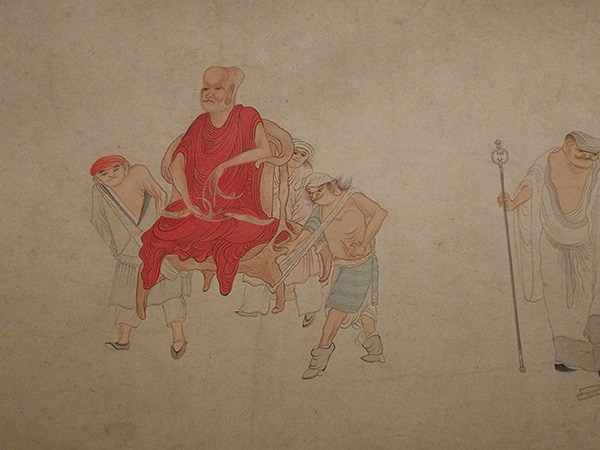 |
|
Wu Bin's grotesque rendition of a Luohan.[Photo provided to China Daily] |
Not only that. For a large part in Chinese art history, painters who were subjected or opted for the influence of Buddhism were often those in exile, self-imposed or otherwise. With political ambition thwarted by reality, religion for them is as much a comfort as a refuge. Some also followed Taoism, founded in the sixth century BC by the Chinese philosopher Laozi, who advocated "inaction" or "action without intention" as a way of reaching harmony with nature and oneself. In the reclusive Luohans some artists have reluctantly discovered their alter ego.
Speaking of Taoism, the indigenous doctrine has spawned its own legion of gods and demigods who are protectors and well-wishers. Compared with their omniscient Buddhist divinities, some have humbler roots, two examples being the sixth century warriors-turned-door gods Qin Qiong and Yuchi Jingde.
Guarding entrances to people's homes in the form of colorful wooden prints, they are more ubiquitous than those who stare down at the kneeling worshippers from the temple of their own, to say the least.
Here is something that is typical of the Chinese approach toward worship: rather than saying prayers to a set group of deities based on a certain belief, the Chinese embraced all, untroubled by even the slightest hint of sectarianism.